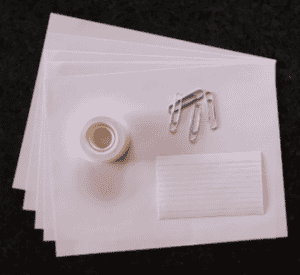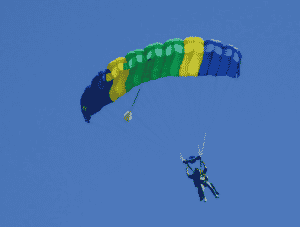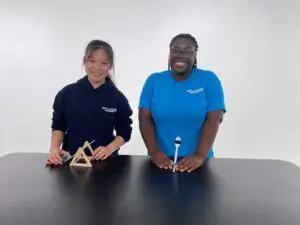This article contains collapsible sections with activity materials, instructions, and additional resources. Use the expand/collapse buttons to view each section.
Activity Content Sections
Click to expand or collapse the materials needed section


 Per Person Team:
Per Person Team: Get your students thinking about different shapes and how they might slow down the paper’s descent or speed it up. Ask:
Get your students thinking about different shapes and how they might slow down the paper’s descent or speed it up. Ask:
 Parachutes work against gravity, which otherwise quickly pulls a person in freefall to Earth. The air caught inside the parachute pushes up against it, creating a force opposite to that of gravity. This drag force, or air resistance, slows the descent to create a safe landing. The larger the parachute, the more air resistance, and the longer it takes to reach the ground.
Parachutes work against gravity, which otherwise quickly pulls a person in freefall to Earth. The air caught inside the parachute pushes up against it, creating a force opposite to that of gravity. This drag force, or air resistance, slows the descent to create a safe landing. The larger the parachute, the more air resistance, and the longer it takes to reach the ground.



Leave feedback form
Thank you! Your submission is processing.